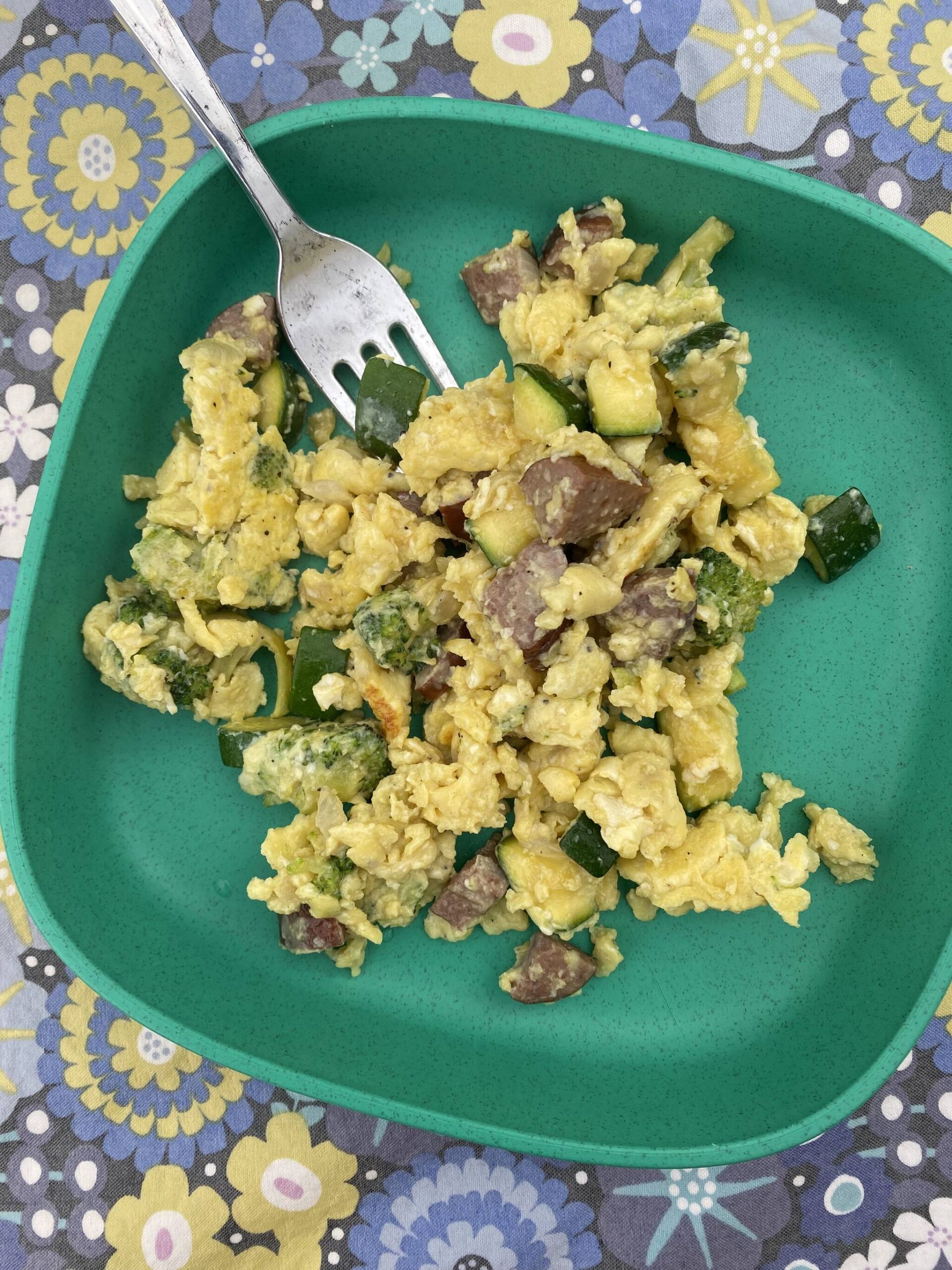We recently took our son out for his first multiday camping trip. We hiked, we fished, we biked, and we were very lucky to be blessed with mild weather and a miraculous absence of biting insects.
Of course, we enjoyed some marshmallow s’mores and snacked on chips, crackers, and candy-laden trail mix, but I was adamant that we would not subject ourselves to three days of a junk food diet simply for the sake of convenience just because we would not have access to our kitchen and refrigerator.
I honestly don’t have a lot of experience with longer than overnight trips, for which some hotdogs, chips and carrot sticks have always sufficed, so I had to get creative with my menu.
I knew our campsite would provide a firepit with a grate for cooking, so I was only limited to dishes that could be cooked in my large skillet or that would only require boiling water. I also knew we had just one large cooler to store every cold item in, so I needed to find ways to save space so I could bring as much as possible.
My strategy was to pack ingredients in their ready-to-use forms to minimize fireside preparation, and to plan a menu that would allow me to limit the variety of ingredients for simplicity.
For lunches we brought sandwich meats, cheese, peanut butter and bread with small containers of condiments — that was an easy choice because I knew our days would be active and away from the campsite, so our midday meals needed to be mobile.
Breakfasts and dinners would be at the campsite and, because I knew we would need hearty fuel in the morning and satisfying evening meals before sliding into our sleeping bags, I planned hot meals. For the sake of simplicity, we had the same meals for each day with minor variations.
I prepared a gallon zip-close bag each of diced zucchini, kielbasa sausage and broccoli florets. I also packed smaller portions of sweet potato — already roasted and diced — and diced onion.
These ingredients were in our breakfasts and dinners each day, sauteed over the open fire in butter, either scrambled with eggs or served on top of couscous. I chose the tiny couscous that are cooked simply by stirring into boiling water and being left to steam for a couple of minutes, and as they are cooked with equal parts water to couscous, do not require precise measurements.
I packed the eggs by cracking them in advance and storing them in a large mason jar. I left the eggs whole and unscrambled in the jar so I could count the yolks as I poured them to make portioning the meals more precise. Small baggies of salt and pepper were the only seasoning.
I also packed gallon zip-close bags of snacking vegetables and fruits — already washed, cut, and ready to eat right out of the bag. These included sweet peppers, carrots, apples and grapes.
The rest of our packing was dry ingredients that did not need to be kept cold, a large frying pan, a smaller saucepan with a lid to cook the couscous in, and my trusty rubber spatula.
With these items I was able to cook nutritious meals for us to enjoy around the fire … and the smoke in my eyes was the most challenging part.

